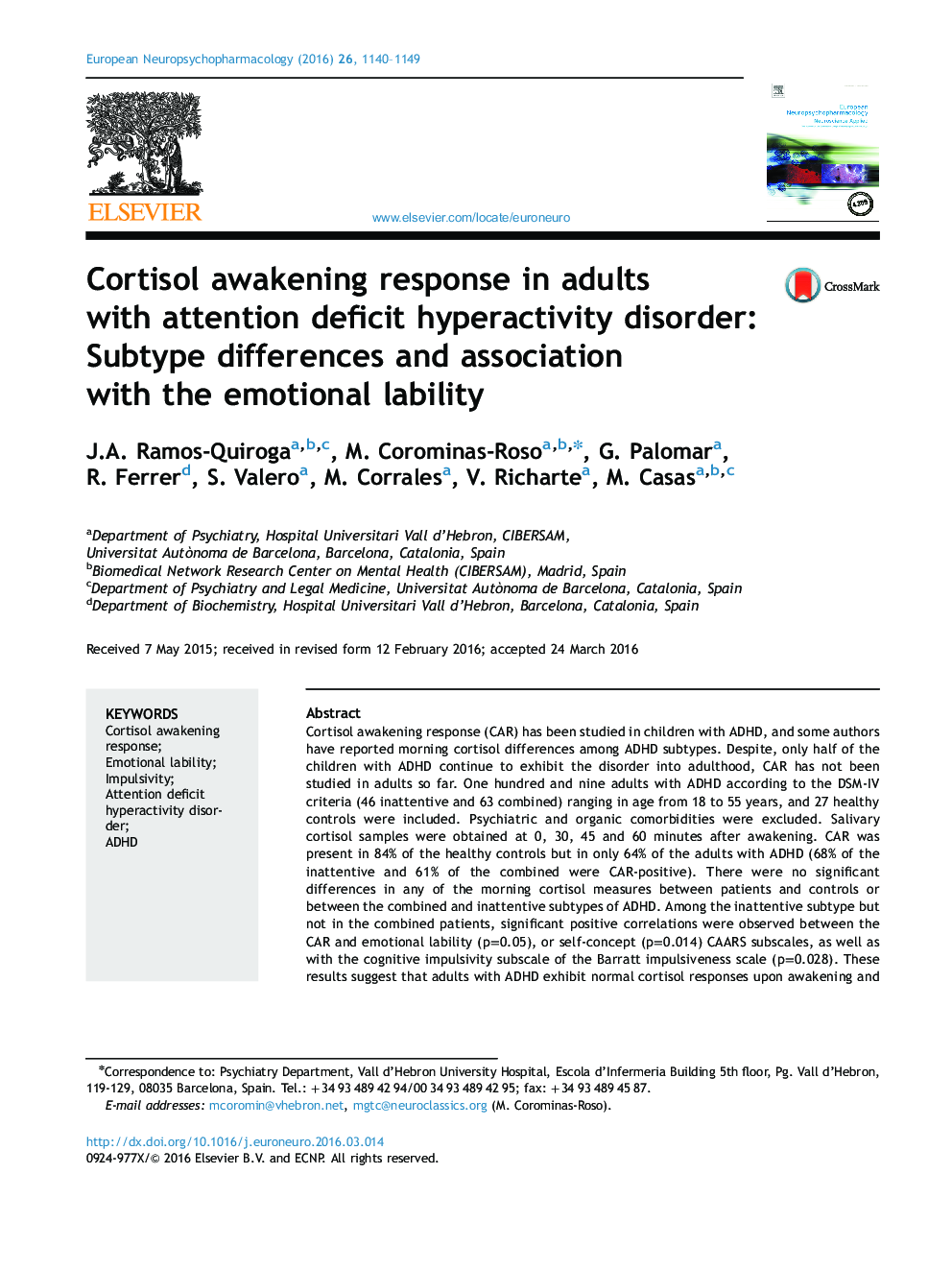| کد مقاله | کد نشریه | سال انتشار | مقاله انگلیسی | نسخه تمام متن |
|---|---|---|---|---|
| 318708 | 539104 | 2016 | 10 صفحه PDF | دانلود رایگان |
Cortisol awakening response (CAR) has been studied in children with ADHD, and some authors have reported morning cortisol differences among ADHD subtypes. Despite, only half of the children with ADHD continue to exhibit the disorder into adulthood, CAR has not been studied in adults so far. One hundred and nine adults with ADHD according to the DSM-IV criteria (46 inattentive and 63 combined) ranging in age from 18 to 55 years, and 27 healthy controls were included. Psychiatric and organic comorbidities were excluded. Salivary cortisol samples were obtained at 0, 30, 45 and 60 minutes after awakening. CAR was present in 84% of the healthy controls but in only 64% of the adults with ADHD (68% of the inattentive and 61% of the combined were CAR-positive). There were no significant differences in any of the morning cortisol measures between patients and controls or between the combined and inattentive subtypes of ADHD. Among the inattentive subtype but not in the combined patients, significant positive correlations were observed between the CAR and emotional lability (p=0.05), or self-concept (p=0.014) CAARS subscales, as well as with the cognitive impulsivity subscale of the Barratt impulsiveness scale (p=0.028). These results suggest that adults with ADHD exhibit normal cortisol responses upon awakening and thus cannot be defined in terms of hypo-arousal. Neurobiological differences between the combined and inattentive subtypes involving cortisol, are discussed.
Journal: European Neuropsychopharmacology - Volume 26, Issue 7, July 2016, Pages 1140–1149
